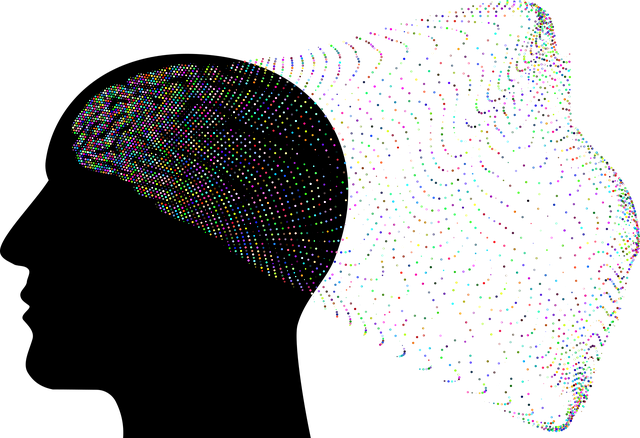Public awareness campaigns, led by organizations like Boulder Anxiety Therapy, play a vital role in educating communities about mental health issues, particularly anxiety disorders. These campaigns aim to reduce stigma, empower individuals with self-care tools, and promote happier lives through open conversations and accessible practices. Targeted outreach, based on demographic and psychographic factors, ensures that messages resonate with specific audiences most in need. Engaging content design, including personal narratives and interactive elements, humanizes complex issues and destigmatizes help-seeking. Balancing traditional and digital communication channels reaches diverse communities, while measuring success through surveys and focus groups ensures campaign relevance and effectiveness.
Public awareness campaigns play a pivotal role in promoting mental health initiatives, especially in addressing prevalent issues like anxiety. This article explores the strategic development of such campaigns, focusing on Boulder Anxiety Therapy as a case study. We’ll delve into defining and setting goals, understanding target audiences, creating compelling content, selecting effective communication channels, and measuring success to enhance outreach for anxiety therapy services. By optimizing these aspects, we aim to increase accessibility and impact in the community.
- Understanding Public Awareness Campaigns: Definition and Goals
- Identifying Target Audiences for Effective Boulder Anxiety Therapy Outreach
- Designing Engaging Content: Strategies for Mental Health Education
- Choosing the Right Communication Channels for Maximum Reach
- Measuring Success and Iterating for Better Results in Anxiety Therapy Awareness
Understanding Public Awareness Campaigns: Definition and Goals

Public awareness campaigns play a pivotal role in educating and engaging communities on various issues, including mental health. At their core, these initiatives aim to create a collective understanding and foster positive change. In the context of Boulder Anxiety Therapy, for instance, such campaigns seek to dispel myths surrounding anxiety disorders while promoting accessible self-care practices. By encouraging open conversations about mental health struggles, these campaigns ultimately strive to reduce stigma and inspire individuals to take proactive steps towards self-esteem improvement.
The ultimate goal is to empower people with the knowledge and tools needed for self-care routine development, enabling them to lead happier, healthier lives. Through targeted messaging and engaging content, awareness campaigns can reach a wide audience, ensuring that those struggling with anxiety or other mental health challenges know they are not alone. This collective effort paves the way for a more informed society where seeking help is normalized, and self-care isn’t just encouraged but celebrated as an essential aspect of well-being.
Identifying Target Audiences for Effective Boulder Anxiety Therapy Outreach

Identifying target audiences is a critical step in developing effective Boulder Anxiety Therapy outreach. By understanding the specific demographics and psychographics of those most affected by anxiety, therapists can tailor their messages and interventions to better resonate with potential clients. This targeted approach ensures that resources are allocated efficiently, maximally benefiting those who need it most. For example, programs focused on young adults might incorporate social media campaigns to reach them in their digital spaces, while workshops for working professionals could be structured around lunch breaks or after-work sessions.
Incorporating strategies like Mindfulness Meditation and Inner Strength Development into outreach can also enhance appeal. These techniques have gained popularity as evidence-based methods for managing anxiety, so integrating them into campaign themes can attract individuals interested in holistic mental wellness. Moreover, Mental Wellness Coaching Programs Development offers a personalized approach, appealing to those seeking ongoing support and guidance in navigating their anxiety journeys. Effective targeting ensures that Boulder Anxiety Therapy initiatives are not only seen but also perceived as valuable solutions by the right audiences.
Designing Engaging Content: Strategies for Mental Health Education

In the realm of public awareness campaigns for mental health education, designing engaging content is a game changer. The key lies in creating accessible and relatable materials that resonate with diverse audiences. Incorporating storytelling techniques, personal narratives from individuals who have successfully navigated challenges like Boulder Anxiety Therapy, can humanize complex issues and foster empathy. By sharing experiences related to self-care practices and trauma support services, these stories inspire hope and encourage open dialogue about mental health.
Visuals play a significant role in capturing attention and conveying powerful messages. Infographics, for instance, can simplify complex information on various mental health topics, making it easier for folks to understand and remember. Incorporating interactive elements like quizzes or personal reflections also encourages active engagement with the content, enhancing learning outcomes. Ultimately, these strategies aim to break down barriers and reduce stigma around seeking help, ensuring that Mental Health Awareness reaches every corner of society.
Choosing the Right Communication Channels for Maximum Reach

When designing a public awareness campaign for Boulder Anxiety Therapy or any mental health initiative, selecting the optimal communication channels is paramount to achieving maximum impact and reach. The right approach ensures that your message resonates with the intended audience, fostering understanding and encouraging help-seeking behaviors. Traditional methods like local newspapers and radio broadcasts still hold value, especially in targeting older demographics. However, given the digital age we live in, online platforms offer immense potential for wider exposure. Social media campaigns, for instance, allow for direct engagement with diverse communities, enabling the dissemination of valuable resources on Stress Reduction Methods and Empathy Building Strategies.
Tailoring content to align with cultural sensitivity in mental healthcare practice is an essential aspect of effective campaign design. By understanding the unique needs and perspectives of different cultural groups, advocates can craft messages that are inclusive and relevant. Leveraging both traditional and digital channels ensures a comprehensive approach, potentially reaching individuals who may not typically engage with mental health services, ultimately contributing to a more informed and supportive society.
Measuring Success and Iterating for Better Results in Anxiety Therapy Awareness

Measuring success is a vital component of any public awareness campaign, especially when addressing sensitive topics like anxiety. In the context of Boulder Anxiety Therapy, understanding the impact of initiatives requires careful evaluation. One effective method is tracking changes in knowledge and attitudes before and after the campaign through surveys or focus groups. By assessing self-reported symptoms and perceived support, researchers can gauge whether the campaign has increased public awareness about anxiety disorders and encouraged help-seeking behaviors.
Iterative improvements are key to enhancing campaign effectiveness over time. Incorporating feedback from participants and analyzing data can reveal areas for refinement. For instance, integrating self-awareness exercises or mindfulness meditation practices into educational materials might improve engagement, while promoting a healthy self-care routine for better mental health could complement the awareness efforts. These adjustments ensure that the campaign remains relevant and impactful, ultimately fostering a more supportive environment for individuals facing anxiety.
Public awareness campaigns play a pivotal role in addressing mental health issues like anxiety, as evidenced by the success of initiatives like Boulder Anxiety Therapy. By understanding key components such as defining goals, identifying target audiences, designing engaging content, selecting optimal communication channels, and measuring impact, we can create impactful campaigns that foster greater public understanding and support for those seeking therapy. Continuous iteration based on measured results ensures that our efforts remain effective and relevant in meeting the evolving needs of communities.














